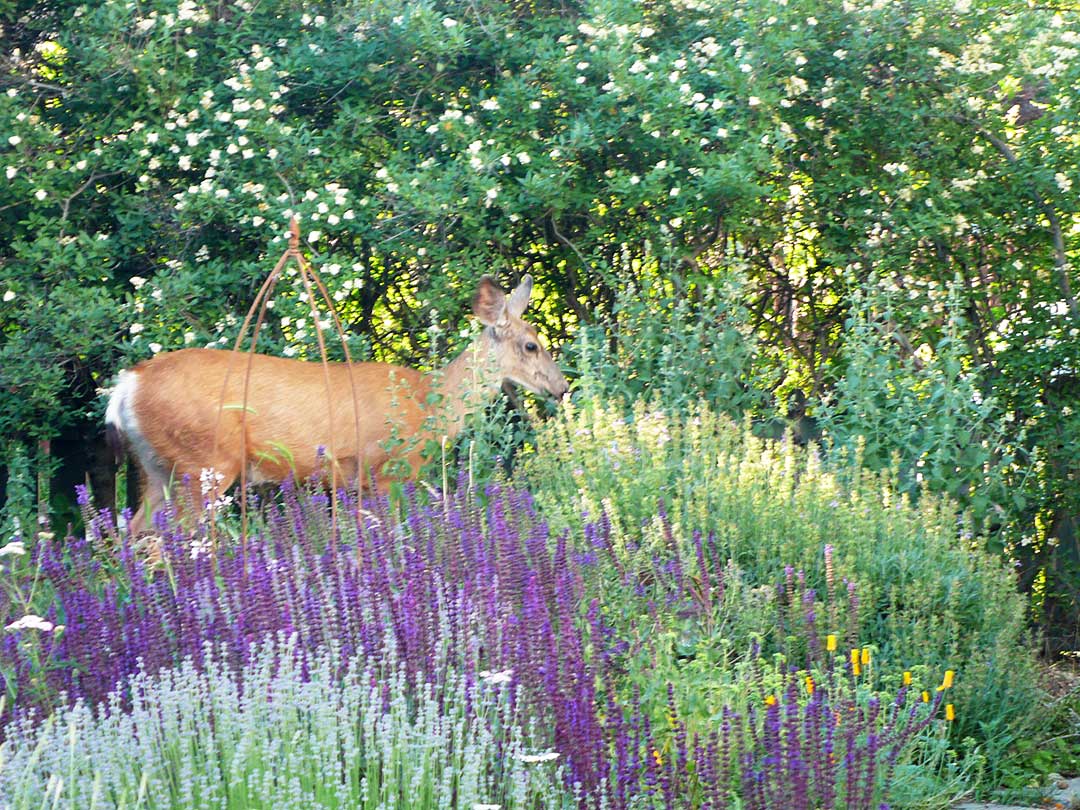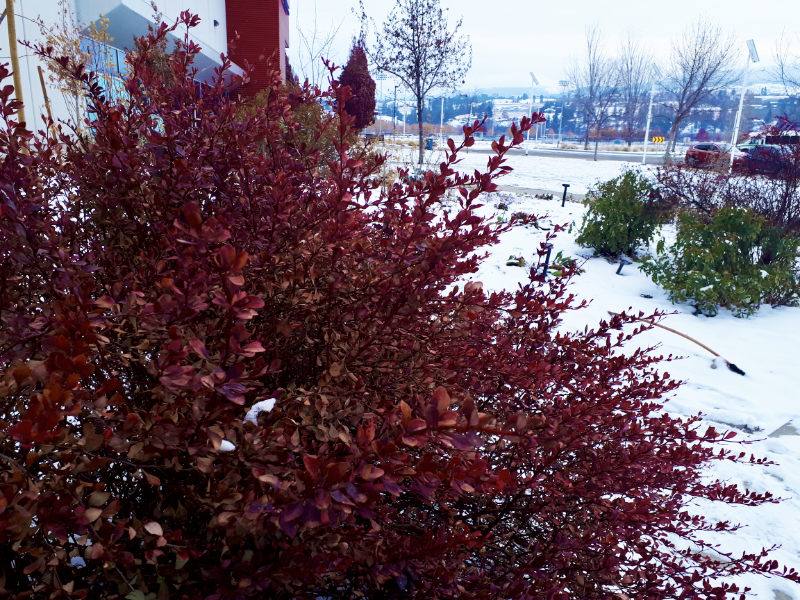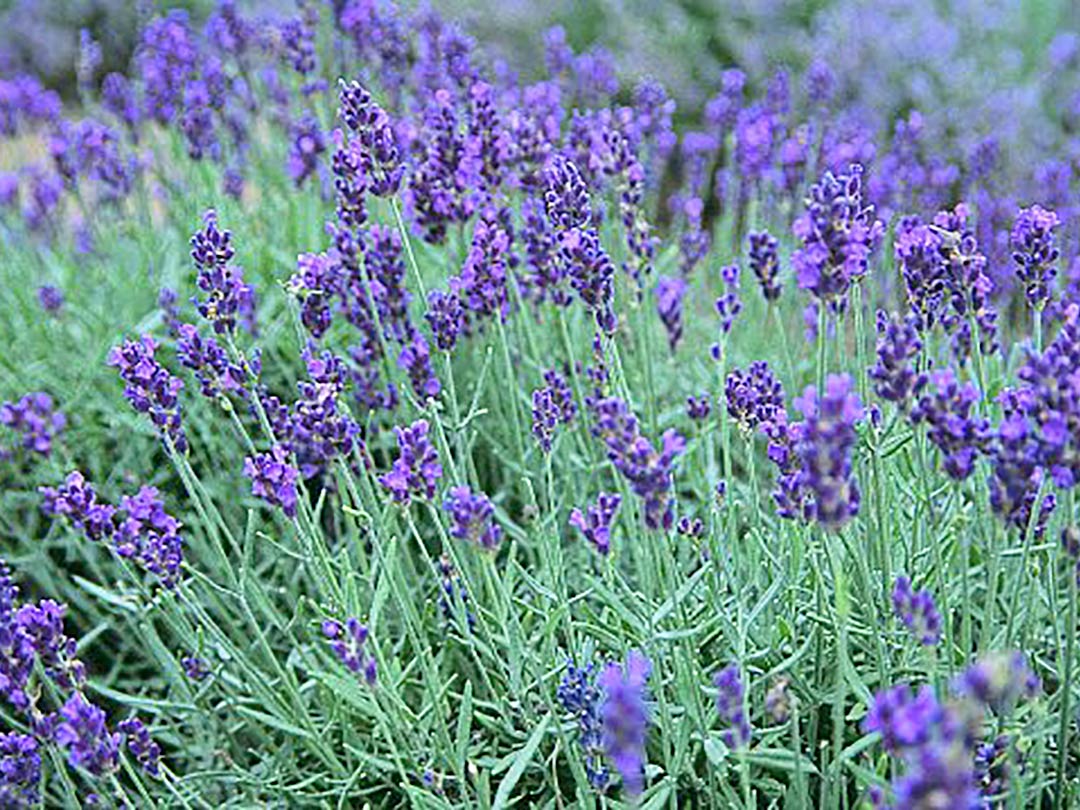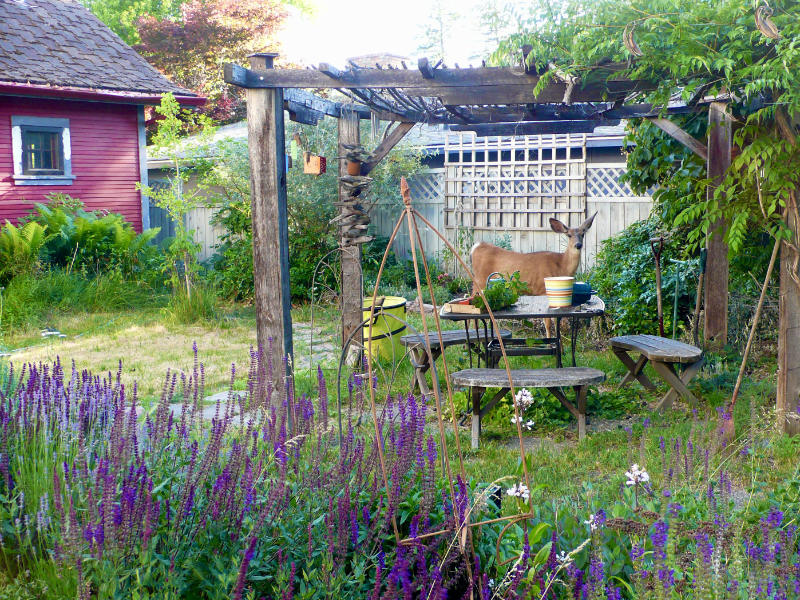GARDENING WITH NATURE
Article by Sigrie Kendrick
Living with Deer in the Okanagan
Living in the beautiful Okanagan Valley comes with many perks, but for gardeners, there is one persistent challenge that stands out: marauding deer.
While deer may be lovely to observe from a distance, they can quickly transform a carefully-cultivated garden into their personal buffet. Understanding deer-resistant plants, particularly those suited to our semi-arid climate, can help you create a thriving landscape that both you and the local wildlife can appreciate—each in your own ways.
Deer are opportunistic feeders, but with surprisingly-discerning palates. They typically avoid plants with certain characteristics that make them either unpalatable or difficult to consume.
The most effective deer-resistant plants share common traits: strong fragrances, fuzzy or textured foliage, bitter or toxic compounds, thorny structures, or tough, leathery leaves.
Plants with high essential oil content, such as herbs and aromatics, are particularly unappealing to deer, as their sensitive noses find these scents overwhelming.
It’s important to emphasize that no plant is completely deer-proof. When food sources are scarce, particularly during harsh winters or drought conditions, deer will eat almost anything, a behavior that was especially obvious in West Kelowna gardens since the 2023 McDougall Creek Fire.
I have a client in Casa Loma who has gardened at her property for decades and accepted that the deer would munch on her Bergenia cordifolia flowers, but more recently, both flowers and foliage are missing.


Deer in an urban garden
Deer-Resistant Plants for a Semi-Arid Climate
The Okanagan’s semi-arid climate, characterized by hot, dry summers and relatively mild winters, makes it ideal for xeric plants, those adapted to dry conditions. These water-wise plants not only conserve our precious water resources but often possess natural deer-resistant qualities.
Many xeric plants have evolved tough, waxy, fuzzy or aromatic foliage as adaptations to conserve moisture—characteristics that coincidentally make them less appealing to browsing animals.
Check out the plant database on this website for examples of some plants we’ve found that normally deter deer.
Perennials: Okanagan deer-resistant, xeric perennials include Achillea cultivars (Yarrow), with its ferny foliage and flat-topped flowers in various colours, and Nepeta (Catmint), which produces spikes of blue flowers and aromatic foliage that deer find objectionable.
Lavender stands out as perhaps the perfect Okanagan deer-resistant plant. Its intense fragrance, drought tolerance, and beautiful purple flowers make it both functional and ornamental.
Similarly, Perovskia atriplifolia (Russian sage) offers aromatic silvery foliage and tall spikes of blue flowers while requiring minimal water once established. Both plants thrive in our alkaline soils and intense summer sun.
Ornamental grasses provide excellent deer resistance while adding movement and texture to the landscape. Helictotrichon sempervirens (Blue Oat Grass), Schizachyrium scoparium (Little Bluestem), and Pennisetum alopecuroides (Fountain Grass) all perform well in our climate, requiring little supplemental irrigation after their first year. Their thin, sharp-edged leaves are simply not appealing to deer.
Shrubs: consider Mahonia species, formally Berberis (Barberry) species, which combine drought tolerance with thorny branches that deer actively avoid.
Potentilla fruticosa (Shrubby Cinquefoil) offers bright flowers throughout the summer in shades of yellow, orange, pink, and white while requiring minimal care. Appreciated more for its foliage than its flowers, Sambucus racemosa “Lemony Lace” (Elderberry) offers yellow-green lace-like foliage with highly dissected leaves and, as of yet, has not been browsed by deer in our West Kelowna demonstration garden.
Annuals: Tagetes tenuifolia (Signet Marigolds), Zinnia elegans (Zinnias), and Antirrhinum majus (Snapdragon) provide bright blooms while being generally deer-resistant, though they’ll need a little regular watering in our dry climate.

Barberry

Lavender
Designing a Water-Wise Garden with Deer-Resistant Plants
Success with deer-resistant gardening involves more than just plant selection. Group plants with similar water needs together, mulch to conserve moisture, and consider installing drip irrigation for efficient watering, rather than overhead. The theory of planting deer favourites near the house where human activity should deter browsing, while placing deer-resistant plants in more remote areas of your property may work in some areas. Remember that young plants are more vulnerable than established ones, so protect new plantings with temporary fencing or repellents until they mature. With thoughtful plant selection and proper care, you can create a beautiful, water-wise garden that thrives in the Okanagan while minimizing deer damage.Our Plant Database features more than 500 plants tested and ideally suited for the unique challenges of gardening in the Okanagan’s extreme climate. Deer-resistant plants are included.
Sigrie Kendrick is a master gardener and executive-director of the non-profit Okanagan Xeriscape Association.

